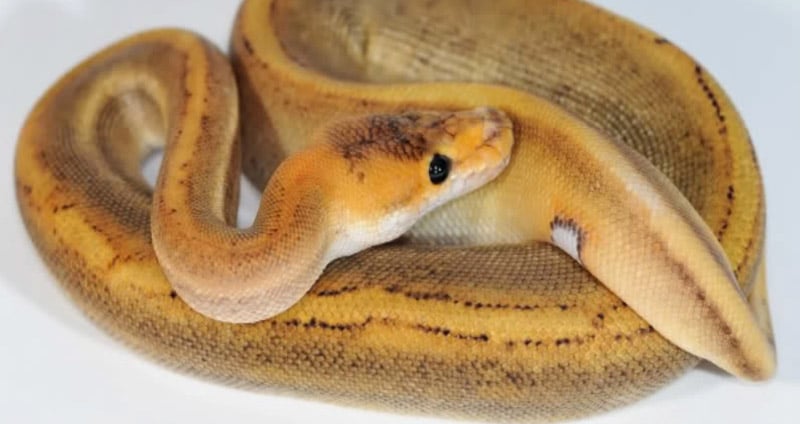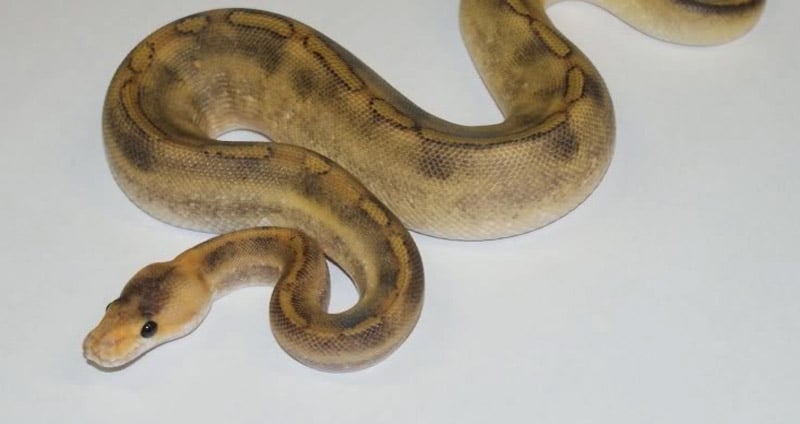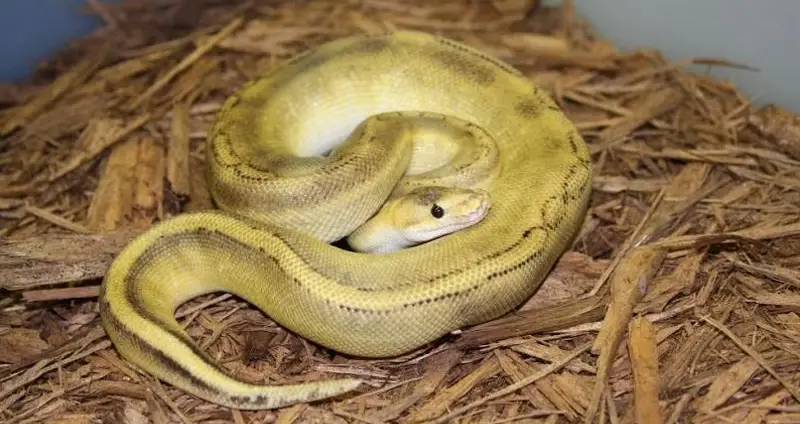The Champagne ball python is a morph that has a great history and a great physical appearance to match! They’re appreciated for their appearance and their effectiveness at being a maker morph.
While people may not be as excited about this morph as they were several years ago, it’s still beloved by breeders and casual owners alike.
Table of Contents
History Of The Champagne Ball Python
The Champagne morph has an interesting history, largely due to the excitement that it caused breeders when it first came around! This morph was first discovered and proven genetic in 2005 by EB Noah.
As soon as it was discovered, a few specimens were sent to Europe and the United States, thus sparking some great interest around the world. It traveled from Africa to America to Europe over and over again as excitement built.
Originally this excitement existed just because of the fact that a new morph was discovered, but it eventually turned into excitement over the breeding possibilities that Champagnes presented.
Patternless ball pythons can create some very interesting combos that can’t be made otherwise, so quite a few breeders jumped on the bandwagon.
Despite the noise Champagnes were making in the ball python world, the interest started to die off. The offspring of Champagnes didn’t have too much variation, so breeders started to look elsewhere for their new prized maker morph.
There would be temporary resurgences when new combos were created, such as the Enchi Champagne, but it would eventually die off again.
Today, the Champagne ball python is still used to make some great looking offspring. It’s also used as a tool by some breeders to test for co-dominant genes in morphs that may not show when combined with morphs other than Champagnes.
Regardless of the situation, it’s hard to deny the Champagne’s place in history.
Champagne Ball Python Genetics
The genetics of the Champagne ball python are quite simple and may actually lead to the discovery of new combinations down the line. This morph was originally thought to be dominant, but was soon proven to be co-dominant.
This co-dominance does allow the morph to be bred out faster, but it can also result in a Super Champagne.
Super Champagne ball pythons are homozygous lethal. This means that the super form of a Champagne ball python will result in a snake that will ultimately die prematurely.
While not too much research has been done on this issue, it’s been reported by many breeders that Super Champagnes almost never (99% of the time) live beyond a few weeks. Due to this possibility, it’s recommended that you never breed Champagne to Champagne.
Another combination that you should never attempt is breeding a Champagne to a Spider. Spiders are susceptible to quite a few issues (such as the Spider wobble), and this combination also proves to be lethal.
However, when Champagnes are combined with other morphs, the results can be great for breeders. Because they’re co-dominant, Champagnes can produce other champagnes and combos that are very unique-looking.
This simplicity has helped them become a part of many different ball pythons that are being sold today.
Price Range Of Champagne Ball Pythons
While Champagne ball pythons aren’t the cheapest morphs out there, they’re definitely not the most expensive. You’ll generally find them for as cheap as a Spotnose or Spider due to the fact that they’re quite common despite them not being around as long.
Standard Champagne ball pythons can typically be found selling for around $150 – $200.
Some Champagne combos, though, can greatly exceed this price range. While common combos such as Pastel Champagnes go for around $200, they’re a part of some morphs that sell for $400 through $1500+.
While the Champagne gene isn’t the main reason these snakes sell for so much, it definitely contributes to the crazy and unique appearance.
Champagne Morph Appearance
Champagnes have an appearance that lends itself to some wonderful combos. Their color is a mixture of light tan and orange with a white belly, sporadic dorsal stripes and circles, and a two-toned head. Hatchling Champagnes have a slight salmon color, but this quickly fades as they age.
When Champagnes are combined with other morphs, the result is often a snake with more muted color and a pattern that has emphasis in strange places.
You’ll often see Champagnes present in snakes that combine 3 or more traits as they do wonders for subtleties in a snake’s appearance.
In recent years, a new line of Champagne ball pythons called the Pumpkin Line Champagne was discovered by Mike Wilbanks. This morph has Champagne traits with a unique orange color and purple undertones.


Photo by Jasbiz2


Photo by ActionReptiles


Photo by BloodBallReptiles


Is the champagne morph considered to be a wobble morph?
I haven’t heard as many people refer to them as a wobble morph as, say, a spider morph. However, yes, they are still susceptible to the wobble.